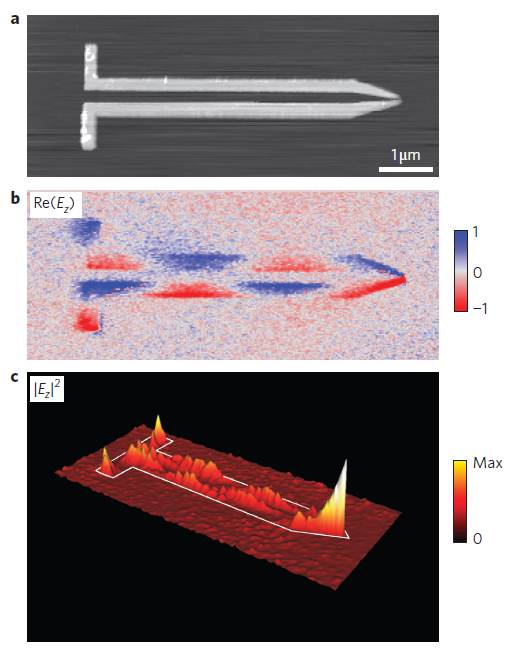Direct visualization of infrared light transportation and nanofocusing by miniature transmission lines is possible by amplitude- and phase-resolved near-field microscopy.
Transmission lines are specialized cables for carrying for example radio frequency signals where electromagnetic radiation is guided in form of a tightly bound surface wave. Infrared near-field microscopy verifies that the concepts of radiofrequency can be scaled down to optical frequencies and that the concept of classic transmission lines can be adapted to the infrared frequency range.
Near-field images taken at a wavelength of 9.3µm show how an optical antenna captures infrared light and converts it into a propagating surface wave traveling along the transmission line. By gradually reducing the width of the transmission line (“tapering”), the infrared surface wave is compressed to a tiny spot at the taper apex with a diameter of only 60 nm. This tiny spot is 150 times smaller than the free-space wavelength. Phase-resolved infrared near-field microscopy can applied to map the different electrical field components of the infrared focus with nanoscale resolution.
The near-field images demonstrate the potential of neaSCOPE to resolve the vectorial character of local optical fields and to verify novel fundamental predictions and technological concepts in nanophotonics, plasmonics and metamaterials research. Offering wavelength-independent resolution, it can be used at visible, infrared and terahertz frequencies.


